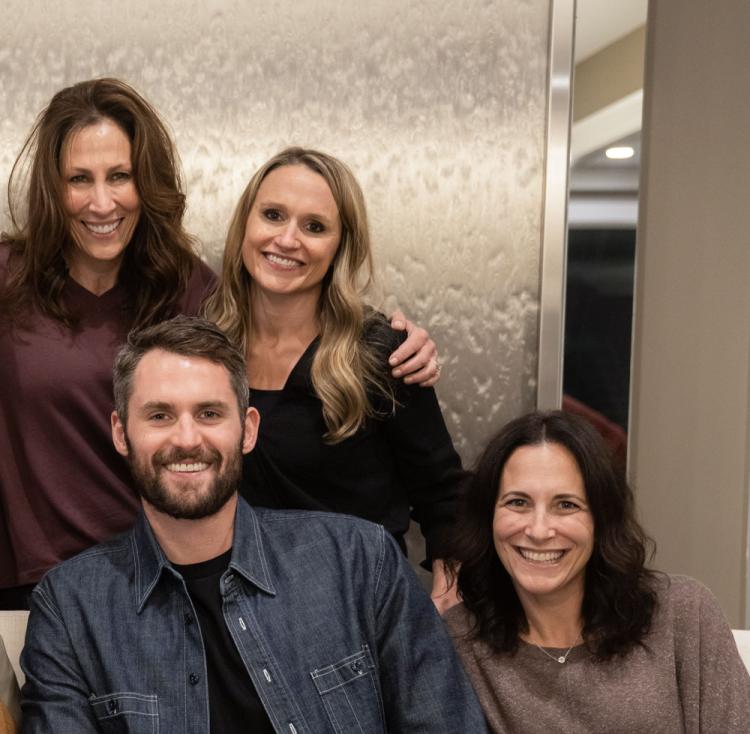Game-Changer
How an NBA star, alumna, teachers and others are centering mental wellness in schools
Professional basketball player Kevin Love remembers lying on the training room floor, heart pounding, after leaving his bewildered Cleveland Cavaliers in the middle of a televised game.

Emotions, heartbreak and challenges are all part of the human experience and modeling helps illustrate that for students, and it also welcomes them to talk about those feelings and emotions in the classroom,” Ellie Haberl Foster said. “When their stories are met with an empathetic witness in their teacher, it encourages them to continue to open up and share.”
On the surface, the NBA star had “made it” in life and was at peak physical health. On that day in 2017, with his trainer repeatedly asking “what do you need?” it became clear that mental health challenges can happen to anyone at any time.
After his public panic attack, the basketball power forward could have stayed silent about the anxiety that has plagued him since his early teens, but he shared his story in the media as an attempt to destigmatize mental health struggles. Support letters came pouring in, especially from young people.
Love launched the Kevin Love Fund in 2018 to use education, research, grants and advocacy to support people, youth in particular, who are suffering. The centerpiece of the foundation is a free curriculum for middle and high school teachers that was co-designed by Ellie Haberl Foster (PhDEdu’19), the foundation’s co-director of education.
The 18-lesson program assists educators in modeling vulnerability and works with students to express their emotions through multimodal creative projects while also learning skills that support their mental health, Foster said.
Within the flexible curriculum teachers have a deep bench of supporters. It opens with Love’s story alongside other videos from youth and guest artists—including actor Bryan Cranston, basketball player Chris Paul and other famed performers—sharing their nuanced strategies for mental wellness.
Students report that modeling from their teachers and others help them express vulnerabilities and feel a sense of belonging, Foster said.
“Emotions, heartbreak and challenges are all part of the human experience and modeling helps illustrate that for students, and it also welcomes them to talk about those feelings and emotions in the classroom,” she said. “When their stories are met with an empathetic witness in their teacher, it encourages them to continue to open up and share.”
Foster is no stranger to this teaching method. As a high school English teacher, she remembers reading an emotional poem about her father that unlocked deeper levels of vulnerability in her students’ work and classroom connections. Her powerful teaching experiences led her to the CU Boulder School of Education to work with her advisor Elizabeth Dutro in the Literacy Studies doctoral program.

The Kevin Love Fund team including Executive Director Regina Miller, Co-Director of Education and CU Boulder Alumna Ellie Haberl Foster (top right), Kevin Love and Co-Director of Education Sara Hahn.
“Elizabeth’s work is about making school spaces where people feel seen, cared for, nurtured and supported—where students and teachers can bring their whole selves,” Foster said. “Her cutting-edge research challenges the notion that students who have experienced trauma or difficulty are broken and need to be healed and the deficit perspectives that often surround students’ vulnerable stories.
“Our training helps teachers learn a new way of thinking about difficult life experiences—that students can bring these stories to their writing and art and that teachers can model this by sharing their own stories of difficult life experiences.”
Foster is grateful for Dutro’s compassionate mentorship, and she sees her work as an opportunity to share what she learned from Dutro with educators nationwide. The alignment with Love’s mission is kismet.
The Kevin Love Fund is the athlete’s response to the question left echoing in his ears following his panic attack: what do you need? With help from Foster and others, the foundation offers the kind of educational support that Love needed as a youth. Since the curriculum’s launch in September 2022, it has reached over 30,000 students with more than 80% saying they are more likely to reach out to a teacher if they are struggling.
“We have hundreds of stories of kids who talked about what a game-changer this was for them,” Foster said. “We also did focus groups with teachers, who said things like, ‘I saw a reduction in bullying, not just in my own classroom, but in our whole school.’
“We think about this as a paradigm shift in what school can be. There are still norms that make kids think school is a place for thinking not feeling, but our curriculum helps students to know that you can bring your whole self into the classroom. You don’t have to pretend if you're going through something. That message is such a relief for teachers and students.”

